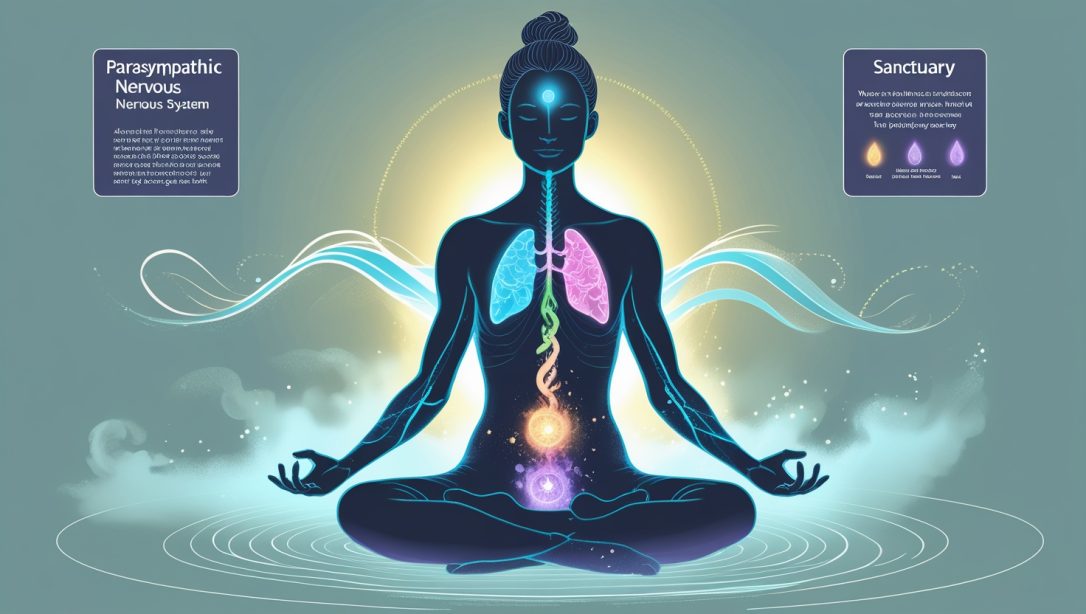How to Use Self-Hypnosis for Stress Reduction and Relaxation
In our fast-paced world, chronic stress has become an epidemic, affecting everything from our sleep quality to our immune function. While occasional stress is a normal part of life, persistent stress triggers a cascade of negative physiological responses that can damage your health over time. The good news? Your mind already possesses powerful tools to counteract these effects—and self-hypnosis is one of the most effective.
Research from major universities and medical centers consistently demonstrates that hypnotic techniques can significantly reduce stress hormones, lower blood pressure, and activate the body’s natural relaxation response. In this guide, we’ll explore how to harness these powerful techniques specifically for stress management and deep relaxation.
The Neurophysiology of Stress and Relaxation
To understand why self-hypnosis works so effectively for stress reduction, let’s briefly examine what happens in your brain and body during both stress and relaxation states:
The Stress Response
When you’re stressed, your brain activates your sympathetic nervous system—the “fight or flight” response—triggering:
- Release of cortisol and adrenaline
- Increased heart rate and blood pressure
- Shallow, rapid breathing
- Blood flow diverted from digestive system to muscles
- Heightened muscle tension
- Suppressed immune function
Brain imaging shows increased activity in the amygdala (your brain’s alarm system) and decreased activity in the prefrontal cortex (your brain’s rational thinking center) during stress.
The Relaxation Response
Self-hypnosis activates your parasympathetic nervous system—the “rest and digest” mode—creating:
- Decreased cortisol and adrenaline
- Lowered heart rate and blood pressure
- Deeper, slower breathing
- Improved digestion
- Muscle relaxation
- Enhanced immune function
EEG studies show increased alpha and theta brain waves during hypnosis, the same patterns associated with meditation and deep relaxation.
Signs You Need Stress-Reduction Self-Hypnosis
You might benefit from stress-reduction self-hypnosis if you experience:
- Persistent tension in your neck, shoulders, or jaw
- Racing thoughts, especially at bedtime
- Irritability or short temper
- Digestive issues that worsen under stress
- Frequent headaches or muscle pain
- Fatigue despite adequate sleep
- Difficulty concentrating or making decisions
- Using alcohol or food to “wind down”
Three Core Self-Hypnosis Techniques for Stress Reduction
The following techniques have been refined through clinical research and practice to specifically target stress reduction. Each takes just 10-15 minutes to perform but can provide hours of relaxation benefits.
1. The 4-7-8 Breathing Induction
This technique, popularized by Dr. Andrew Weil and validated in respiratory research, combines controlled breathing with self-hypnotic suggestion to rapidly activate your parasympathetic nervous system.
Step-by-Step Process:
- Sit comfortably with your back straight and close your eyes.
- Place the tip of your tongue against the ridge behind your upper front teeth and keep it there throughout the exercise.
- Exhale completely through your mouth with a whooshing sound.
- Close your mouth and inhale quietly through your nose for a mental count of 4.
- Hold your breath for a count of 7.
- Exhale completely through your mouth for a count of 8, making the whooshing sound.
- Repeat the cycle 3 more times (for a total of 4 breaths).
- After the fourth cycle, say to yourself: “With each breath, I’m becoming twice as relaxed. My mind is becoming quiet, my body is becoming heavy, and I’m drifting into a state of deep, peaceful relaxation.”
- Continue normal breathing while visualizing a wave of relaxation flowing from the top of your head to the tips of your toes.
- Deepen this state by counting down from 10 to 1, feeling yourself relax more deeply with each number.
- Once deeply relaxed, use suggestions like: “My body responds to my thoughts. I now release all tension and stress from every cell. With each breath, I become calmer and more peaceful. This state of relaxation stays with me throughout the day.”
- To emerge, count from 1 to 5, bringing your energy back while maintaining the sense of calm.
Research shows that practicing this technique twice daily can significantly reduce baseline stress levels within just 10 days.
2. The Progressive Body Scan
This technique combines elements of mindfulness and hypnosis to release physical tension—often the first manifestation of stress. A study published in the Journal of Clinical Psychology found that regular practice of body scan techniques reduced cortisol levels by up to 23% in chronically stressed individuals.
Step-by-Step Process:
- Lie down or sit comfortably with your eyes closed.
- Take three deep breaths, exhaling slowly.
- Begin by focusing on your toes. Notice any sensations without judgment.
- Imagine each exhale carrying tension away from your toes, leaving them feeling heavy and relaxed.
- Mentally repeat: “My toes are completely relaxed.”
- Gradually move up through each body part: feet, ankles, calves, knees, thighs, hips, abdomen, chest, back, hands, arms, shoulders, neck, and face.
- For areas with noticeable tension, spend extra time using suggestions like: “The muscles in my shoulders are now releasing all their tension. They’re becoming soft, heavy, and completely relaxed.”
- After completing the scan, imagine your entire body surrounded by a warm, healing light that dissolves any remaining tension.
- Suggest to yourself: “My entire body is now deeply relaxed. I can return to this state of calm whenever I choose by simply focusing on my breath and remembering this feeling.”
- Enjoy this state for 3-5 minutes before gently returning to normal awareness.
This technique is particularly effective before bed for those who experience stress-related insomnia.
3. The Sanctuary Visualization
This powerful hypnotic visualization creates a mental refuge from stress that you can access anytime. Neuroimaging research shows that vivid visualizations activate many of the same neural pathways as actual experiences, allowing your brain to trigger genuine relaxation responses.
Step-by-Step Process:
- Induce a hypnotic state using your preferred method (4-7-8 breathing or progressive relaxation).
- Once relaxed, imagine standing at the entrance to your personal sanctuary—a place of perfect peace and safety. This can be real or imagined, indoor or outdoor.
- Engage all five senses as you mentally enter this space:
- What do you see? (Colors, light, surroundings)
- What do you hear? (Water, birds, music, silence)
- What do you smell? (Flowers, ocean air, pine)
- What can you touch? (Textures, temperature)
- What can you taste? (Fresh air, salt breeze)
- Create a special relaxation spot within your sanctuary—perhaps a comfortable chair, a hammock, or a soft patch of grass.
- Settle into this spot and imagine stress visibly leaving your body, perhaps as colored mist that dissipates into the air.
- Establish an anchor by pressing your thumb and middle finger together while mentally saying, “Peace.” This creates a neural association that you can use in daily life to quickly recall this peaceful state.
- Tell yourself: “This sanctuary exists within my mind and is always available to me. I can return here whenever I need peace and renewal. Each time I visit, I feel more deeply relaxed and carry this calm back into my daily life.”
- Spend 5-10 minutes fully experiencing your sanctuary before gradually returning to awareness.
With practice, just thinking about your sanctuary can trigger the same relaxation response, making this an invaluable tool for managing stress in real-time.
Specialized Applications for Specific Stress Triggers
Different sources of stress may benefit from tailored approaches. Here are scripts for common stress triggers:
For Work-Related Stress
Short Script: “I now separate my work responsibilities from my sense of self. I can care about my work without carrying stress about it. I handle challenges with calm efficiency. Between tasks, I take relaxing breaths that reset my nervous system. I leave work concerns at work and transition easily to relaxation when my workday ends.”
For Social Anxiety
Short Script: “In social situations, I am naturally calm and present. I focus on one person at a time, listening with genuine interest. I accept myself completely and know that I belong. My breathing remains steady and my mind clear. I express myself authentically and value the connection with others.”
For Financial Worries
Short Script: “I separate financial concerns from my sense of peace. I take practical steps to manage my resources wisely, then release worry about the future. My worth is not measured by my wealth. I attract positive financial opportunities through my calm, confident approach to life.”
For Health Anxiety
Short Script: “I now listen to my body with calm awareness rather than fear. I take appropriate care of my health and then release worry. Each cell in my body responds positively to my peaceful state of mind. I focus on wellness rather than illness, and trust in my body’s natural healing capacity.”
Creating a Personalized Stress-Reduction Routine
For maximum effectiveness, establish a consistent self-hypnosis practice:
Morning Practice (5-10 minutes)
A morning session sets a calm foundation for your day:
- Before getting out of bed or immediately after, practice the 4-7-8 breathing technique
- Include suggestions for carrying calm throughout your day
- Visualize handling anticipated challenges with ease and confidence
Micro-Sessions Throughout the Day (30-60 seconds each)
Brief moments of self-hypnosis can prevent stress accumulation:
- Set reminders on your phone for 2-3 times during your day
- Take three deep breaths while repeating your anchor phrase
- Briefly recall your sanctuary visualization
- Return to activities with renewed calm
Evening Wind-Down (10-15 minutes)
An evening session helps release accumulated stress and prepare for restful sleep:
- Practice the Progressive Body Scan
- Visit your sanctuary visualization
- Include suggestions for peaceful sleep and subconscious problem-solving
Measuring Your Progress
Research shows that tracking results improves outcomes. Consider monitoring:
- Subjective stress levels: Rate your stress on a 1-10 scale daily
- Physical markers: Track resting heart rate, blood pressure, or stress-related symptoms
- Sleep quality: Note how quickly you fall asleep and how rested you feel
- Resilience: How quickly do you recover from stressful events?
Many smartphone apps can help track these metrics, providing valuable feedback on your progress.
Integrating Self-Hypnosis with Other Stress-Management Approaches
For comprehensive stress management, combine self-hypnosis with:
Physical Approaches
- Regular exercise: Reduces stress hormones and increases endorphins
- Proper nutrition: Stabilizes blood sugar and provides stress-fighting nutrients
- Adequate sleep: Allows for nervous system recovery and stress hormone regulation
Cognitive Approaches
- Mindfulness practices: Complements self-hypnosis by building present-moment awareness
- Cognitive restructuring: Challenges stress-inducing thought patterns
- Time management strategies: Reduces situational stressors
Social Approaches
- Building supportive relationships: Provides emotional buffers against stress
- Setting healthy boundaries: Reduces interpersonal stress triggers
- Communication skills: Prevents miscommunication-related stress
Advanced Technique: The Stress Inoculation Protocol
Once you’ve mastered basic stress-reduction techniques, try this advanced approach used by high-performance individuals in stressful professions:
- Induce a moderate hypnotic state using your preferred method.
- Visualize a mildly stressful situation you expect to encounter.
- Notice any physical tension or emotional responses arising.
- While maintaining the hypnotic state, implement coping strategies:
- Deepen your breathing
- Release muscle tension
- Mentally step back from the situation
- Replace catastrophic thoughts with realistic ones
- Visualize yourself handling the situation with calm confidence.
- Gradually increase the intensity of the visualized stressor while maintaining your relaxed state.
- Create a trigger phrase like “Calm Strength” that you can use during actual stressful events.
Regular practice of this protocol builds neural pathways for resilience, essentially “pre-programming” your brain to respond calmly to stressors rather than reactively.
Common Challenges and Solutions
Challenge: “My mind wanders to stressful thoughts during practice” Solution: This is normal. Notice the thoughts without judgment, then gently return to your practice. Each time you redirect your attention, you’re strengthening your mental control.
Challenge: “I fall asleep during the practice” Solution: While relaxation is good, sleep prevents conscious integration of suggestions. Try practicing sitting up, earlier in the day, or setting a gentle alarm for 15 minutes.
Challenge: “I don’t feel anything happening” Solution: The effects of self-hypnosis can be subtle initially. Look for small changes in your daily stress responses rather than dramatic sensations during practice. Also, try the analytical vs. non-analytical techniques discussed in our previous post to find what works for your mind type.
Challenge: “I don’t have time for this” Solution: Start with just 5 minutes daily. The time investment quickly pays off through improved efficiency, better health, and reduced time lost to stress-related issues.
Conclusion: Consistency Creates Transformation
Stress reduction through self-hypnosis isn’t a one-time fix but a skill that develops with practice. Neuroscience shows that consistent practice creates lasting changes in your brain’s stress-response circuits, gradually shifting your baseline state to one of greater calm and resilience.
As little as 10 minutes daily for 21 consecutive days can create measurable changes in your stress physiology. Think of each session as a deposit in your “relaxation bank account,” building resources you can draw upon during challenging times.
In our next post, we’ll explore how to use self-hypnosis to break unwanted habits like smoking, nail-biting, and emotional eating.
Have stress-reduction techniques like these worked for you? What stress triggers would you most like to address with self-hypnosis? Share your experiences in the comments below!
Disclaimer: While self-hypnosis is proven effective for everyday stress management, it should not replace professional treatment for severe anxiety disorders, PTSD, or clinical depression. If you experience debilitating stress or anxiety, please consult with appropriate healthcare providers.







